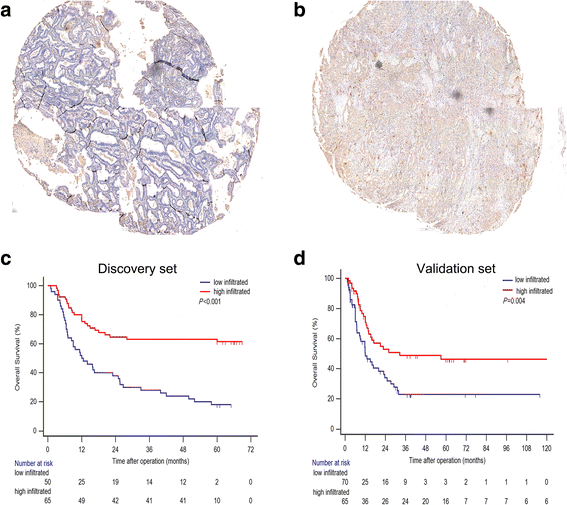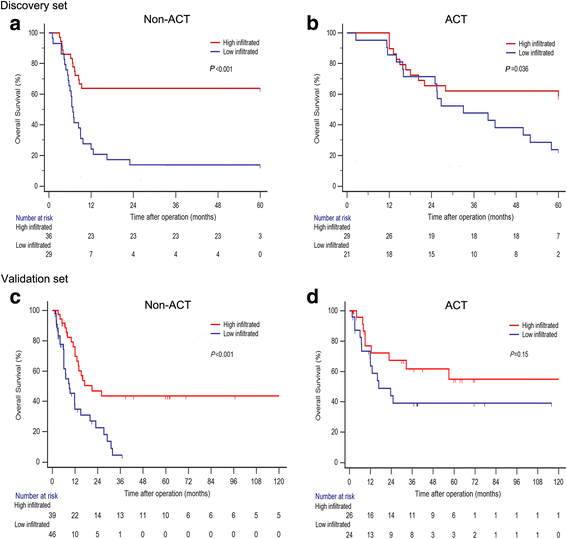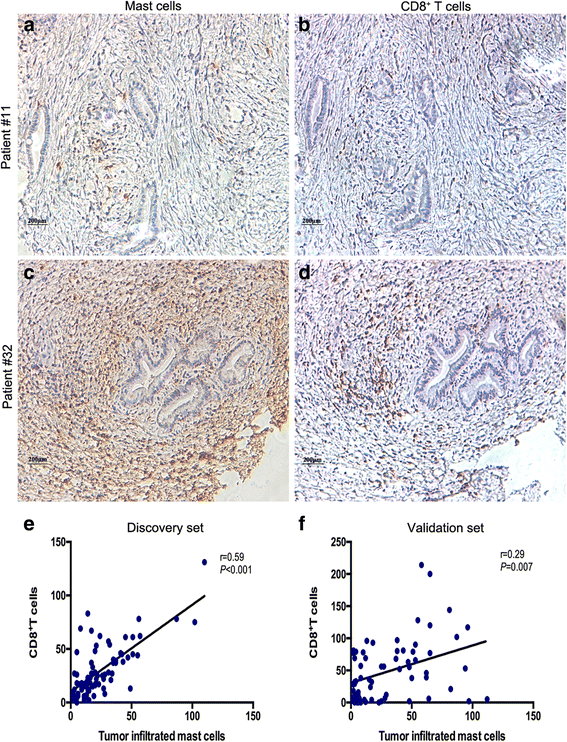Tumor-infiltrating mast cells predict prognosis and gemcitabine-based adjuvant chemotherapeutic benefit in biliary tract cancer patients
- PMID: 29562907
- PMCID: PMC5863450
- DOI: 10.1186/s12885-018-4220-1
Tumor-infiltrating mast cells predict prognosis and gemcitabine-based adjuvant chemotherapeutic benefit in biliary tract cancer patients
Abstract
Background: Recent studies have reported TIMs play an important role in tumors progression or regression, but the effect of TIMs in biliary tract cancer remains unclear. The aim of this study is to investigate the prognostic value of tumor infiltrating mast cells (TIMs) and its influence on gemcitabine-based adjuvant chemotherapy (ACT) benefits in biliary tract cancer patients after surgery.
Methods: TIMs were evaluated by immunohistochemical staining of tryptase in 250 patients with resected gallbladder carcinoma (GBC) or extrahepatic bile duct carcinoma (EBDC) from Zhongshan Hospital. The relationships between TIMs and clinicopathological factors and postoperative prognosis were analyzed respectively.
Results: High TIMs infiltration was significantly correlated with prolonged overall survival (OS). Furthermore, multivariate analysis indicated TNM stage and TIMs as independent prognostic factors for OS. Patients with high TIMs infiltration appeared to significantly benefit from Gemcitabine-based ACT in the discovery and validation cohorts. Spearman analysis identified that TIMs infiltration were positively correlated with anti-tumor CD8+ T cells.
Conclusion: TIMs infiltration is an independent favorable prognostic factor in GBC and EBDC patients, which could better stratify patients with different prognosis and predict benefit from gemcitabine-based ACT.
Keywords: Adjuvant chemotherapy; Biliary tract cancer; Mast cells; Overall survival; Surgery.
Conflict of interest statement
Ethics approval and consent to participate
The study was approved by Fudan university, Zhongshan hospital research medical ethics committee (B2014–029). All specimens were obtained from patients with written informed consent.
Consent for publication
Not applicable.
Competing interests
The authors declare that they have no competing interests.
Publisher’s Note
Springer Nature remains neutral with regard to jurisdictional claims in published maps and institutional affiliations.
Figures



References
Publication types
MeSH terms
Substances
Grants and funding
- 81471621/National Natural Science Foundation of China/International
- 81472227/National Natural Science Foundation of China/International
- 81502004/National Natural Science Foundation of China/International
- 81671628/National Natural Science Foundation of China/International
- 31770851/National Natural Science Foundation of China/International
LinkOut - more resources
Full Text Sources
Other Literature Sources
Research Materials

